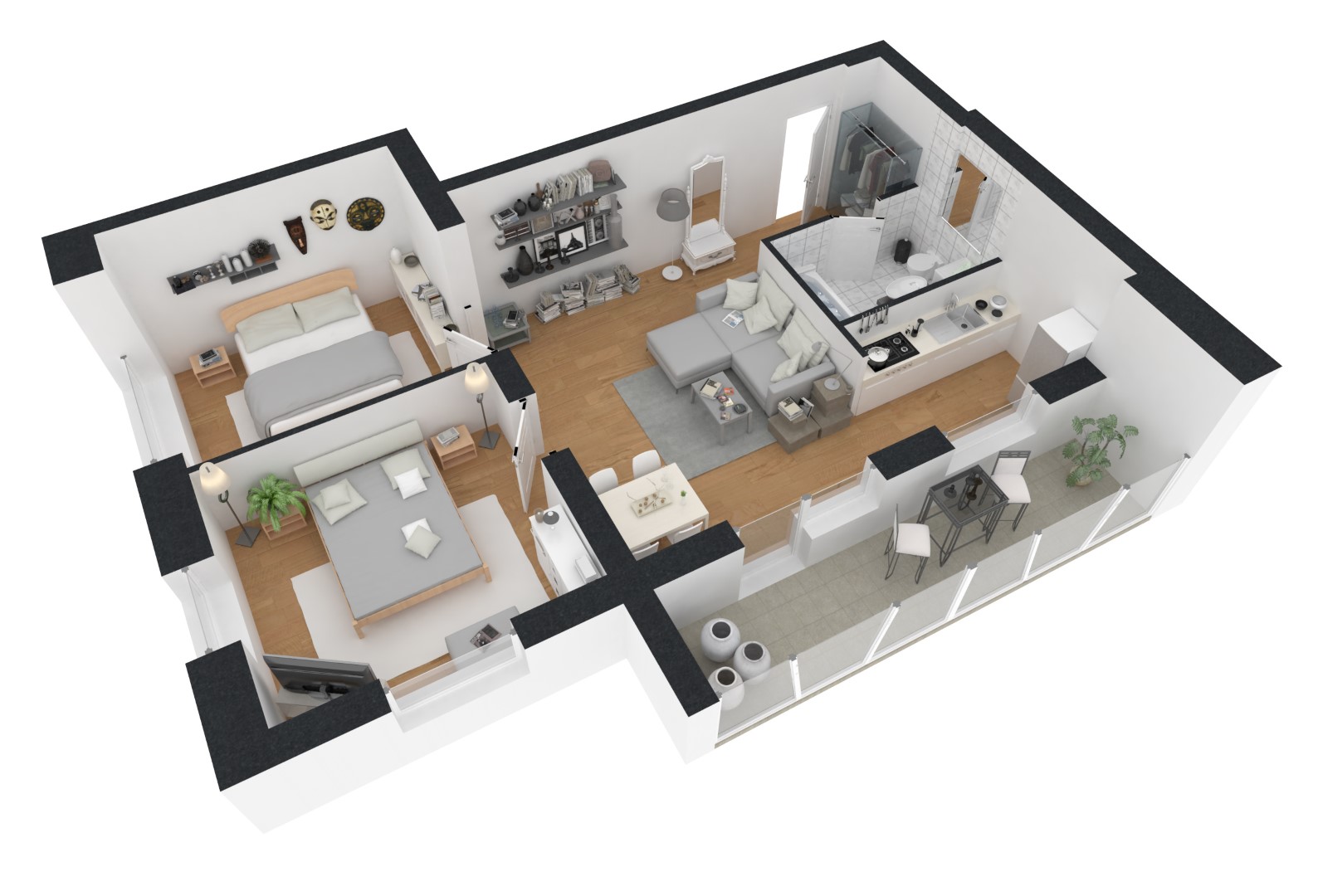Unlocking the Selling Potential of VR in Property Showcasing
Introduction
In recent years, the real estate industry has undergone a digital transformation, with cutting-edge technologies such as 3D virtual tours radically changing how properties are marketed and sold. Traditional photography and video have long been the standard tools for showcasing a property, but now those mediums are being eclipsed by innovative 3D virtual tours. This article will dive into the world of virtual tours in real estate, examining the technologies, equipment, and selling power of this modern means of property showcasing.
Virtual Tour 101: Technologies and Equipment
Virtual tours offer potential buyers an immersive, interactive experience that allows them to explore every corner of a property from the comfort of their homes. To create these incredibly realistic digital environments, real estate agents must utilize advanced technology and specialized equipment.
- 3D-Enabled Cameras: To create a virtual tour, photographers use 3D-enabled cameras, such as the Matterport Pro2 or the Ricoh Theta Z1. These high-end devices can capture 360-degree panoramas with stunning accuracy and detail.
- Tripods: A sturdy tripod helps to keep the camera steady during the photo shoot, ensuring that each image is sharp and free from distortion.
- Capture Software: This software allows photographers to create a complete 3D model of the property by stitching together the high-quality images captured during the shoot. The most popular options for capture software include Matterport, Cupix, and Zillow 3D Home.
- VR Headsets: While virtual tours can be enjoyed on any device – from smartphones to desktop computers – the most immersive way to explore a property is through a virtual reality (VR) headset, such as the Oculus Rift or Samsung Gear VR.
The Selling Power of 3D Virtual Tours in Real Estate
3D virtual tours offer several advantages over traditional photography and video, making them a powerful tool in the real estate marketing arsenal. Here are some of the key benefits that contribute to their selling power:
- Immersive Experience: Unlike photos or video, 3D virtual tours give potential buyers the ability to navigate a property as if they were actually there. This level of immersion helps buyers form a stronger emotional connection to the property, making them more inclined to submit an offer.
- Increased Reach: Virtual tours make it easy for potential buyers to view properties remotely, removing geographical barriers and expanding the pool of prospects. This is particularly beneficial for properties that may appeal to international or out-of-town buyers. Moreover, during the COVID-19 pandemic, virtual tours have proven invaluable in keeping real estate transactions moving forward while adhering to social distancing guidelines.
- 24/7 Accessibility: Unlike physical property visits, virtual tours can be accessed anytime, anywhere, on any device. This convenience makes it possible for a wider range of prospective buyers to view a property at their leisure, increasing the chances of finding the perfect match.
- Improved Efficiency: With virtual tours, buyers can quickly and easily determine if a property meets their requirements, helping to narrow down their choice of properties to visit in person. This streamlined process saves both agents and clients time and effort, resulting in a more efficient home-buying experience.
- Enhanced Marketing Materials: Incorporating 3D virtual tours into property listings can give agents a unique selling point and distinguish their services from competitors. In addition, websites featuring virtual tours have been shown to generate more traffic and engagement, improving agents’ chances of attracting new buyers and referrals.
Virtual Tours Listings Sales Increase in Numbers
The use of 3D virtual tours in real estate listings has consistently demonstrated an increase in engagement with potential buyers, leading to higher numbers of inquiries and faster sales. Here are some key statistics that illustrate the impact of virtual tours on property sales:
- Higher click-through rate: According to research conducted by Realtor.com, listings featuring virtual tours receive a staggering 87% more views, with potential buyers being more likely to click on a property advertisement that includes a 3D tour.
- Keeping viewers engaged: Virtual tours have been shown to retain viewers’ attention for up to 5-10 times longer than standard photo listings. By providing an interactive and immersive experience, virtual tours encourage users to explore and engage with properties more.
- Boosts inquiries: According to a report by Inman, properties with virtual tours generate 40% more inquiries from potential buyers compared to those without. This increased interest can translate into more leads, showings, and ultimately, sales.
- Faster sales cycle: A study conducted by Matterport found that houses that incorporated virtual tours in their listings sold 31% faster than those without. This efficient sales cycle can lead to increased profitability for real estate agents and faster results for sellers.
- More conversions: Virtual tours have been shown to increase conversion rates by as much as 14% to 21% when compared to listings without them. This statistic emphasizes the importance of integrating 3D virtual tours into property marketing strategies.
These statistics demonstrate the significant impact of virtual tours on property engagement, prompting increased buyer interest and more robust marketing results. By incorporating 3D virtual tours into real estate listings, agents can effectively enhance their property marketing strategies and witness a notable improvement in lead generation and sales outcomes.
Looking Ahead: The Future of Real Estate Marketing
As 3D virtual tours continue to gain traction within the real estate industry, we can expect further advancements and innovations in property marketing technologies. Here are a few potential developments that could shape the future of real estate marketing:
- Augmented Reality (AR): AR technology has the potential to enhance virtual tours by overlaying digital information – such as details about appliances or renovation options – directly onto physical spaces. This added layer of interactivity can help buyers gain a deeper understanding of a property’s features and visualize themselves living in the space.
- Artificial Intelligence (AI): AI-driven systems can be employed to analyze user behavior within virtual tours, providing insights into buyer preferences and trends. This data can then be used to fine-tune marketing strategies, optimize property staging, and create more compelling virtual tour experiences.
- Social Media Integration: As social media platforms continue to grow and evolve, we can expect more seamless integration of virtual tours into popular applications like Facebook, Instagram, and TikTok. This increased exposure could help agents reach wider audiences and attract highly-engaged potential buyers.
- Virtual Reality Staging: As VR technology improves, staging properties with virtual furniture and decorations could become more realistic and affordable, enabling agents to showcase properties in their best light and cater to various buyer tastes with ease.
- Drone Footage: High-quality drone footage can be used in conjunction with virtual tours to showcase a property’s exterior, neighborhood, and surroundings. This added perspective could provide buyers with a comprehensive understanding of a property’s location and its proximity to amenities, further enhancing the appeal of virtual tours.
By embracing and adapting to these emerging trends and technologies, real estate professionals will be well-positioned to capitalize on the immense selling power of 3D virtual tours. The future of real estate marketing is undoubtedly immersive, interactive, and increasingly digital – an exciting prospect for agents and buyers alike.
In Conclusion: A New Era of Property Showcasing
As the real estate industry continues to embrace digital transformation, 3D virtual tours have emerged as a revolutionary tool that undeniably enhances the property-showcasing process. By offering an immersive, accessible, and efficient buying experience, virtual tours have gained prominence and are expected to become the norm in real estate marketing endeavors.
To stay ahead in this rapidly evolving market, real estate professionals must be prepared to invest in advanced technologies and equipment, continuously explore new methods and techniques of showcasing properties, and adapt their marketing strategies to leverage the full potential of virtual tours.
Ultimately, 3D virtual tours have shown they are more than just a passing trend – they are an essential element of the modern real estate industry that offers immense selling power and unparalleled benefits to buyers and sellers alike. Staying ahead of the curve by embracing these advancements will ensure real estate agents are well-equipped to navigate the increasingly digital landscape and maximize success in their market.
As demonstrated by the numerous advantages of virtual tours in real estate, this technology is becoming the new standard for showcasing properties. The immersive experience provided by 3D virtual tours not only captivates potential buyers but also increases the reach and efficiency of property marketing efforts. By investing in cutting-edge technologies and equipment, real estate agents can capitalize on the selling power of virtual tours to generate more leads, increase buyer engagement, and ultimately, close more deals.

BIG PICTURE 360 IS A PHOTOGRAPHY
Learn more about our real estate photography, virtual tours, and drone photography services. Get an instant photography services quote.

